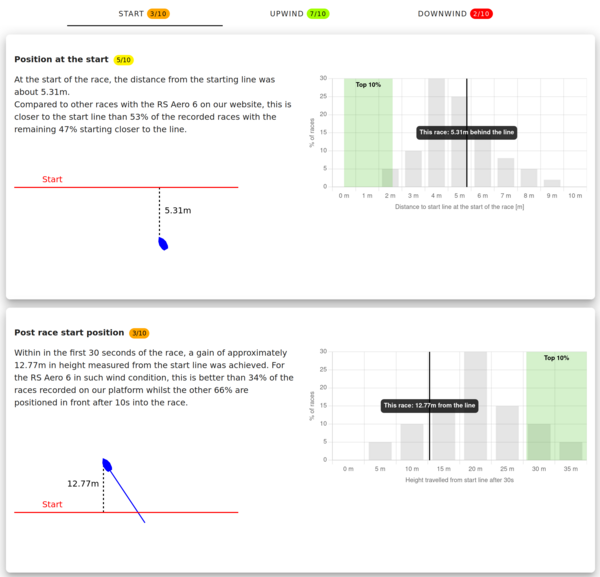Sports Analytics MVP Development with AI and Machine Learning
Why Focus on Sports Analytics?
Sports analytics is no longer confined to analyzing game statistics. It has expanded to include player performance optimization, injury prevention, fan engagement strategies, and even betting predictions. Teams, broadcasters, and sports organizations are actively seeking AI-powered solutions to make sense of complex datasets.
Key reasons why the sports industry is ripe for AI-driven innovation:
- High Volume of Data: Wearable devices, video footage, and traditional stats generate enormous data streams.
- Real-Time Decision Making: Coaches and players benefit from actionable insights during games.
- Personalized Fan Experiences: AI tailors content, merchandise, and engagement to individual fans.
- Revenue Growth Opportunities: From betting analytics to sponsorship optimization, the possibilities are endless.
The MVP Approach for Sports Analytics
Developing a full-scale sports analytics platform is a massive undertaking. However, an MVP allows you to deliver a core set of functionalities quickly, test market viability, and iterate based on user feedback. Here’s how you can approach MVP development for sports analytics:
Step 1: Define Your Target Audience
Identify the segment you want to serve. Potential audiences include:
- Sports Teams: Interested in performance tracking and tactical analysis.
- Coaches and Scouts: Focused on player evaluation and tactical decision-making.
- Betting Platforms: Looking for predictive models for financial applications.
- Fan Engagement Apps: Focused on personalizing experiences.
- Sponsors and Marketers: Interested in connecting with athletes for campaigns.
Step 2: Choose Core Features
Based on the audience, prioritize essential functionalities:
- Data Integration: Collect and process data from wearables, sensors, and other sources
- Visualization Tools: Dashboards with charts, heatmaps, and other graphics.
- Predictive Analytics: Use ML models to forecast player performance, game outcomes, or sponsorship opportunities.
- User Customization: Filters and configurations to tailor insights.
Step 3: Select the Right Technologies
- Machine Learning and AI: Frameworks like TensorFlow, PyTorch, or Scikit-learn for building predictive models.
- Computer Vision:: For tasks like object tracking and pose estimation—examples include analyzing golf swings, rowing technique etc.
- Object and 3D Tracking: To monitor movements and enhance insights from video data.
- Wearables: Devices to track physiological data such as heart rate or motion.
- Data Integration and Visualization: Tools to merge datasets and present them intuitively.
Step 4: Build and Iterate
Launch the MVP quickly and gather user feedback. Agile methodologies ensure you can make improvements and expand features based on real-world needs.

Example showing a dashboard with sports data as currently used in the sailing platform sailingmetrics.com
AI and ML in Action: Use Cases for MVPs
- Assisting Individual Athletes or Teams:
- Use computer vision to track player movements during games.
- Develop ML models to analyze and improve techniques, such as golf swing classification and analysis.
- Assisting Coaches and Scouts:
- Leverage pose estimation to evaluate player mechanics.
- Provide data-driven insights to identify talent and optimize team tactics.
- Connecting Athletes and Sponsors:
- Create platforms that match athletes with sponsorship opportunities based on performance metrics.
- Use predictive models to assess potential ROI for sponsors.
- Predicting Sports Outcomes:
- Build models for betting applications to forecast game outcomes and player stats.
- Use integrated APIs to provide real-time betting insights.
- Enhancing Fan Engagement:
- Recommend game highlights or merchandise using AI-driven personalization.
- Use sentiment analysis to tailor content based on fan reactions on social media.
The Process of Developing a Sports Analytics MVP
There is no blueprint that fully describes the process of developing a MVP as it very much depends on the specific idea or need. Typically development includes the following steps:
- Requirements Engineering:
- Define key functionality of the MVP which includes clear goals, timeline and key metrics for success.
- Research and Model Validation:
- Explore relevant AI/ML techniques if needed and validate them with historical and live data. You might also need to acquire specific data or use simulations.
- Design for the MVP:
- Prioritize usability with intuitive dashboards and interfaces
- Priority might
- Plan modular features for scalability.
- Initial/Internal Version:
- Develop a prototype for internal testing, this could be a smartphone or web app.
- Identify and resolve technical bottlenecks early.
- Deployment and Wider Testing:
- Roll out to a select test audience for real-world feedback.
- Iterate based on usage patterns and reported issues.
Costs for MVP development
The costs to develop a sports analytics MVP heavily depend on the scope. Simple prototypes, screenshots or videos to demo a certain functionality could start below 1000 USD or EUR whilst costs for a smartphone or web app typically start in the range of around 1.000 USD / EUR.
Conclusion
The demand for AI-driven sports analytics solutions is on the rise, and an MVP-focused approach can position you as a pioneer in this space. By addressing specific pain points with actionable insights and delivering value through AI and machine learning, you can attract stakeholders and investors eager to transform the sports industry.
Whether you’re aiming to support individual athletes, assist teams and coaches, or revolutionize fan engagement, starting with an MVP ensures a clear path to innovation. Take the leap into sports analytics and turn your vision into a game-changing reality—one data point at a time.